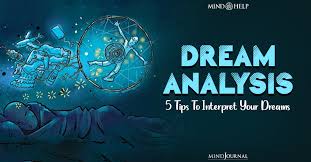Dreams have fascinated humans for millennia, wheat dreams often seen as a window into the subconscious or a reflection of our innermost thoughts and emotions. The art of interpreting dreams has evolved significantly, blending ancient wisdom with contemporary psychological insights. This article delves into the intricacies of dream interpretation, offering a fresh perspective on understanding what our dreams might be revealing about our inner world.
The Basics of Dream Interpretation
Dream interpretation involves analyzing the content, symbols, and emotions within a dream to uncover potential meanings. Traditionally, various cultures have ascribed different meanings to dreams. For instance, ancient Egyptians and Greeks considered dreams to be messages from the divine, while Freudian psychology viewed dreams as manifestations of repressed desires.
Common Dream Themes and Their Meanings
- Falling: Dreams of falling often signify feelings of insecurity or loss of control. They may reflect anxieties about one’s personal or professional life and can be a reminder to address these insecurities.
- Being Chased: This common dream motif might indicate that you are avoiding a problem or situation in your waking life. The pursuer often symbolizes something you’re reluctant to confront, whether it’s a responsibility or an emotional issue.
- Flying: Experiencing flight in a dream can represent a desire for freedom or a sense of empowerment. It may also signify a perspective of rising above challenges or gaining a new viewpoint.
- Teeth Falling Out: This unsettling dream may relate to concerns about appearance, aging, or self-esteem. It often reflects anxieties about personal image or a fear of losing control over one’s life.
- Being Naked in Public: Dreams of public nudity can symbolize vulnerability or a fear of exposure. It may indicate feelings of being unprepared or concerns about how others perceive you.
Cultural Perspectives on Dream Interpretation
Different cultures offer unique perspectives on dream interpretation:
- Chinese Culture: In traditional Chinese beliefs, dreams are thought to reflect one’s balance of yin and yang. Specific dream symbols, like seeing a fish, might be interpreted as good fortune or abundance.
- Native American Traditions: Many Native American tribes view dreams as a means of receiving guidance from ancestors or spiritual beings. They often consider recurring dreams as messages that require deeper reflection.
- Jungian Psychology: Carl Jung, a prominent psychologist, believed that dreams provide insight into the collective unconscious and personal archetypes. He posited that dreams use symbols to communicate aspects of the self and unresolved issues.
Modern Approaches to Dream Analysis
Contemporary psychologists and researchers utilize various methods to analyze dreams:
- Cognitive Theory: This approach suggests that dreams are a byproduct of cognitive processes and problem-solving. According to this theory, dreams may help process emotions and experiences from daily life.
- Neuroscientific Perspective: Recent research in neuroscience explores how dreams are related to brain activity during REM sleep. Studies have shown that certain areas of the brain, such as those involved in emotions and memory, are highly active during dreaming.
- Therapeutic Techniques: In therapy, dreams can be used as a tool to explore underlying issues. Techniques such as dream journaling and guided visualization can help individuals gain insights into their dreams and how they relate to their waking life.
Practical Tips for Interpreting Your Dreams
- Keep a Dream Journal: Recording your dreams immediately after waking can help capture details and recurring themes. Over time, patterns may emerge that offer insights into your subconscious mind.
- Reflect on Emotions: Pay attention to the emotions experienced in your dreams. They can provide valuable clues about the dream’s meaning and how it relates to your waking life.
- Consider Personal Context: Dream symbols and scenarios are often deeply personal. Reflect on what specific symbols mean to you, as their significance can vary based on individual experiences and feelings.
- Seek Multiple Perspectives: While personal interpretation is crucial, exploring various cultural and psychological perspectives can enrich your understanding of your dreams.
Conclusion
Dream interpretation is a multifaceted field that blends ancient traditions with modern psychological insights. By exploring common dream themes, cultural perspectives, and contemporary approaches, individuals can gain a deeper understanding of their dreams and what they may reveal about their subconscious mind. Whether you view dreams as a source of personal insight or as a reflection of your cognitive processes, interpreting them can offer valuable perspectives on your emotional and psychological well-being.

